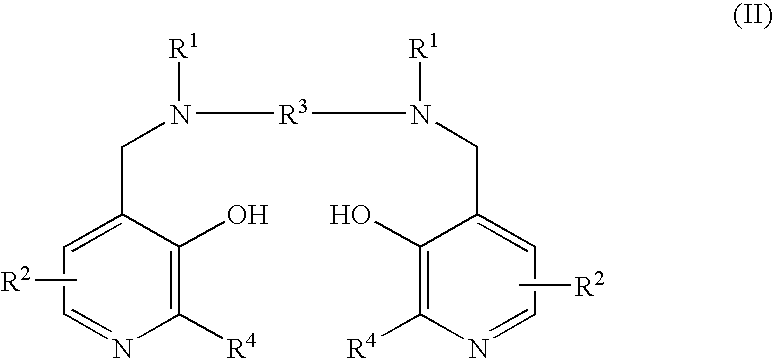Method of treating multiple sclerosis
a multiple sclerosis and treatment method technology, applied in the field of new treatments, can solve the problems of limiting clinical usefulness, many of these treatments are required to be administered frequently, and none of these existing therapies are proven satisfactory, and achieve the effect of convenient patient treatment, reduced or minimized the toxic effect of the active therapeutic agen
- Summary
- Abstract
- Description
- Claims
- Application Information
AI Technical Summary
Benefits of technology
Problems solved by technology
Method used
Image
Examples
example 1
[0113] A female patient, 32 years of age, is diagnosed with progressive multiple sclerosis. Anthracycline therapy is initiated with doxorubicin by intravenous injection at a dose of 40 mg / m.sup.2 on a 12-week cycle. Prior to the administration of the anthracycline, the patient is pretreated with 400 mg of dexrazoxane by intravenous injection about 30 minutes prior to administration of the doxorubicin. The patient is monitored for progress of treatment and for hematologic and non-hematologic toxicity throughout the course of treatment. The dose of doxorubicin is increased to 45 mg and the dose of dexrazoxane increased to 450 mg in the next cycle when the maximal hematologic and non-hematologic toxicity does not exceed grade 22 by NCI-CTC criteria.
example 2
[0114] A male patient, 25 years of age, is diagnosed with progressive multiple sclerosis. Anthracycline therapy with epirubicin 75 mg by intravenous injection is initiated on a 12-week cycle. Prior to the administration of the anthracycline, the patient is pretreated with dexrazoxane at 750 mg by intravenous injection. The patient is monitored for progress of treatment and hematologic and non-hematologic toxicity throughout the course of treatment. The dose is titillated to epirubicin 100 mg and dexrazoxane 1000 mg, in the second cycle of dose administration when the maximal hematologic and non-hematologic toxicity does not exceed grade 22 by NCI-CTC criteria. The patient's clinical condition deteriorates between weeks 9 and 12 during each of the first and second treatment cycles; accordingly, the treatment cycle is shortened to 8 weeks after the third dose.
example 3
[0115] A male patient, 30 years of age, is diagnosed with progressive multiple sclerosis. Anthracycline therapy with daunomycin at 40 mg is initiated with a 12-week cycle. The daunomycin is administered by a single intravenous injection. The patient is monitored for progress of treatment and for hematologic and non-hematologic toxicity throughout the course of treatment. The dose of daunomycin is increased to 60 mg starting in the second cycle of treatment when the maximal hematologic and non-hematologic toxicity in the patient does not exceed grade 22 by NCI-CTC criteria.
PUM
| Property | Measurement | Unit |
|---|---|---|
| Linear density | aaaaa | aaaaa |
| Linear density | aaaaa | aaaaa |
| Linear density | aaaaa | aaaaa |
Abstract
Description
Claims
Application Information
 Login to View More
Login to View More - R&D
- Intellectual Property
- Life Sciences
- Materials
- Tech Scout
- Unparalleled Data Quality
- Higher Quality Content
- 60% Fewer Hallucinations
Browse by: Latest US Patents, China's latest patents, Technical Efficacy Thesaurus, Application Domain, Technology Topic, Popular Technical Reports.
© 2025 PatSnap. All rights reserved.Legal|Privacy policy|Modern Slavery Act Transparency Statement|Sitemap|About US| Contact US: help@patsnap.com



